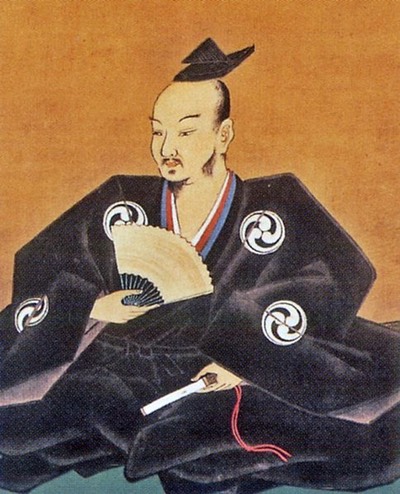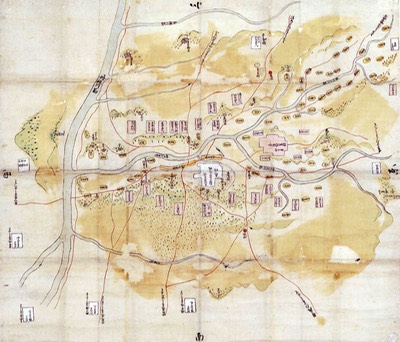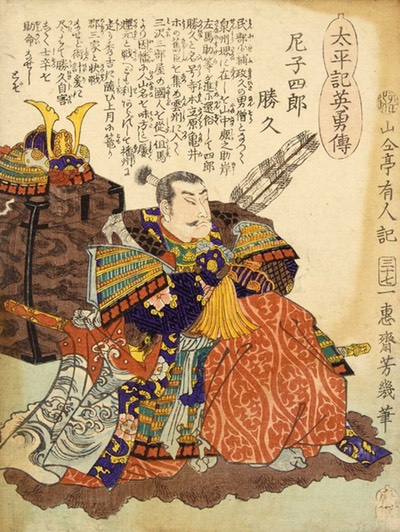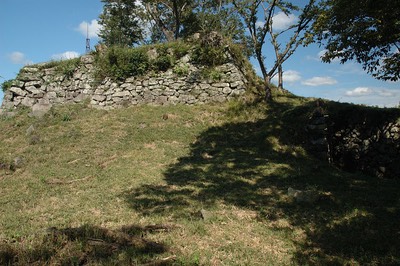Musashi's stepmother, Yoshiko, of whom Musashi is believed to have been very fond, was also of noble birth. Her clan belonged to a junior line of the Akamatsu and Yoshiko’s father, Bessho Shigeharu, had been the master of Rikan castle, which overlooked the town of Hirafuki, not far from Harima's border with Mimasaka. Leader of the Bessho clan when Yoshiko was still a young girl was Bessho Nagaharu (1558–80), a powerful force in the region, who commanded the respect and loyalty of many of the local chieftains. Nagaharu's headquarters were at Miki castle, some thirty miles south east from Hirafuku, and not far from Akashi.
It was the 1570s, the time that Oda Nobunaga had set his mind on subduing western Honshu in his his drive to unify the country. His most powerful adversaries there were the great Mori clan, whose power base lay in the western province of Aki. Nagaharu had initially supported Nobunaga’s drive westward, but due to his wife’s clan relations, he stubbornly refused to submit to the rule of Toyotomi Hideyoshi, at that time Nobunaga’s chief general in the region.
Banding up with other local chieftains he began to attack Hideyoshi’s forces, even calling in the help of the Mōri. His resistance proved so fierce that at one stage, Hideyoshi’s army was forced to retreat, which so enraged the great general that he laid siege to Miki castle. Finally, in January 1580, having held out for a year and ten months, Nagaharu agreed to commit seppuku with his wife and children on the condition that those who had served them would be spared.
Yoshiko's father, Shigeharu, had chosen Nagaharu's side in the conflict. In 1578, shortly after Hideyoshi had laid siege of Miki castle, a force under the command of Amago Katsuhisa the master of Kōzuki castle, situated only a few miles south of Hirafuku, laid siege of Rikan castle. The castle fell after a few weeks and Shigeharu was dispossessed. That same year, Katsuhisa's domain, in turn was overrun by a Mōri alliance, upon which both castles fell into the hands of the Ukita, one of the Mōri's staunchest allies.
Marrying into the Shinmen, therefore, had been Yoshiko’s rescue from a life of hard work and constant need. Their marriage, however, failed. Following her divorce from Muni, sometime during the 1590s, Yoshiko moved back to Harima and settled down in the village of Hirafuku, the place where she had been born. She remarried with a member of her own clan, a man by the name of Tasumi Masahisa. The name Tasumi (rice-field dweller), suggests that he belonged to a family of farmers, although it is believed that Masahira held the position of village elder. Unlike Rikan castle, of which only part of the foundation remains, the Tasumi dwelling has survived the centuries.
Though not related, Musashi's second adoptive son, Iori, was distantly connected to Musashi's stepmother. From the family records of the Miyamoto clan in Kokura, as well as a munafuda (a sign staked to a traditional building stating the building’s donor, builder, and date of construction) recently uncovered from the Tomari shrine of Yoneda village, it appears that Iori was the second son of a certain Tawara Hisamitsu, a samurai in the service of Bessho Nagaharu (see Musashi’s Children). Following the demise of his master, Hisamitsu took up farming near Yoneda, where he had two sons, the second of whom was Iori.
Any queries of remarks? Launch or join a discussion at our new FORUM



